cheeseboarding
Sunday, November 19th, 2017 Recipe: build your own cheeseboard
Recipe: build your own cheeseboard
My parents did a lot of entertaining when I was growing up. It was something I was vaguely aware of as a little kid. Kris and I would belly flop onto my parents’ bed and watch television until we heard the adults move to the dining room for dinner. At that point, Kris would nudge me and say, “Come on, let’s go downstairs.” We’d sneak into the kitchen unseen by the guests (but always seen by Dad, who would flash us one of his goofy smiles as we tiptoed down the stairs) and nosh on whatever was left of the appetizers: smoked oysters, cheese, crackers, olives, caviar. Party food.
Mom and Dad still entertain to this day, so I found it amusing when Dad texted me last year asking what goes on a cheeseboard. He wanted ideas since I had plated a few during various dinner parties they had attended. I grabbed some photos from my archives as well as a handful off of Pinterest to give him some inspiration. When I threw Dad’s belated birthday party at our place last weekend, I made sure to kick it off with a nice cheeseboard because I know my Dad loves a cheeseboard packed with ALL of the goodies.
The holidays are upon us and that means party season is in full swing. Cheeseboards are a lovely way to get a dinner party started or to act as the workhorse for a cocktail party or to keep family and friends occupied as you rush to cook Thanksgiving dinner. If you are looking for ideas to spark your own cheeseboard artistry, I list and show some of my favorites here. There is enormous flexibility in cheeseboards, including not having any cheese!
neva wants to become an olympic cheeseboarder [note: grapes are toxic for dogs]
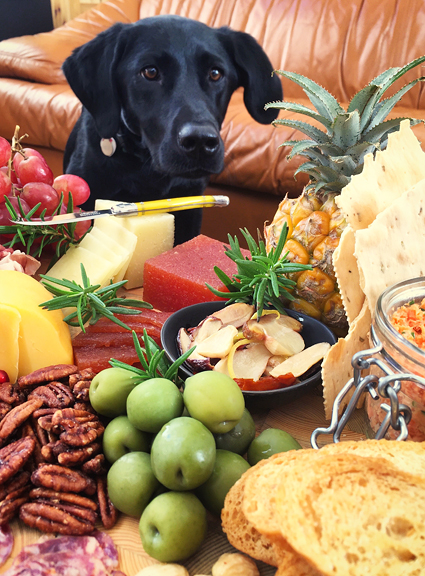
Let’s start with the actual board. The board can be a plate (porcelain, glass, etc.), slate, wood, whatever you like! Plates are the easiest to clean – especially if you serve things that are oily or messy directly on the board. And slate is great for writing the names of cheeses with chalk. I am partial to wood boards because of the beautiful natural colors and grain, which is why I have a lot of them. Some are gifts from my friend, Jamie, who is an incredibly talented woodworking artist. Occasionally, I use my largest Boos cutting blocks (24×18-inch walnut and 20×15-inch maple) because they give me the greatest surface area.
If you do have something oily like hot smoked salmon, and you don’t want the oils to soak into your nice wood boards (because let’s face it, once the board is out, it doesn’t get cleaned up until after the last guest leaves), you can slap a small plate underneath it to keep the fishy smells out of the wood. And remember, cheeseboards don’t have to be these gigantic cornucopias that can feed the whole neighborhood. Small cheeseboards for two are romantic. Medium cheeseboards for a cozy gathering of close friends work very well without being overwhelming. So don’t go crazy, but… you can go a little crazy.
you can serve on plates or slate
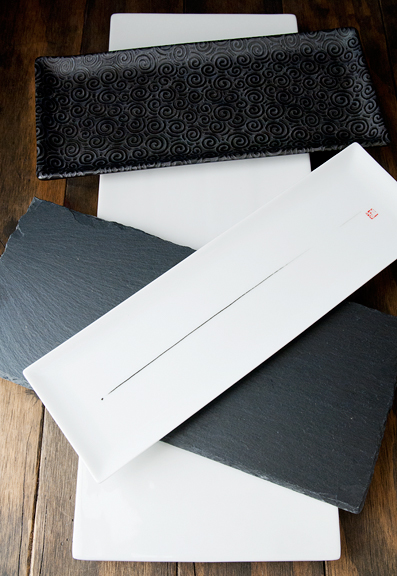
wood boards: an array of shapes, sizes, and designs
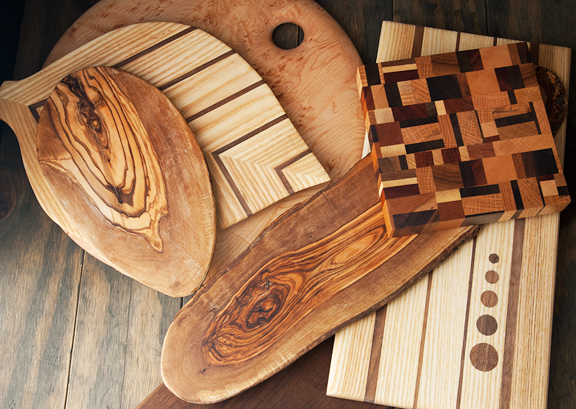
The fun part of cheeseboarding is picking out what to serve on your cheeseboard. It’s whatever you want it to be. I personally like the cheeseboards that don’t have much if any cheese because I don’t dig on eating cheese straight up. But I know the majority of my guests love cheese, so there is always at least one soft, one semi-soft, and one hard cheese. I also have friends who have Celiac disease, so I can either omit all gluten items (mostly crackers and breads) or plate those separately to avoid contamination of the gluten-free items.
Another nice thing about cheeseboards is that they can be as labor intensive as you like – or not! Just about everything can be purchased, but sometimes it’s nice to add your own personal touch. I always make my own crostini and I usually make those prohibitively expensive fruit, nut, and seed crisps unless I am slammed for time. Grissini happen to be quite easy to make at home, too.
I find fruit and fruity things pair well with various cheeses or act as a nice palate cleanser between nibbles. I don’t make my own fruit, but I do make my own fig and brandy jam every summer to serve with brie throughout the year. I have made membrillo, a delectable quince paste in the past to pair with manchego, but it requires a lot of work at my elevation, so I have resorted to purchasing it now that more stores carry it. In late summer, I love it when I can find good fresh figs. Lots of folks like figs with blue cheese and honey, but I tend eat them straight or with a little slice of prosciutto. Another crowd pleaser is baked brie with fresh cranberry sauce or fig jam or tomato jam. Goat cheese and jam is also a hit.
cheeses: aged cheddar, smoked gouda, brie, boursin, manchego
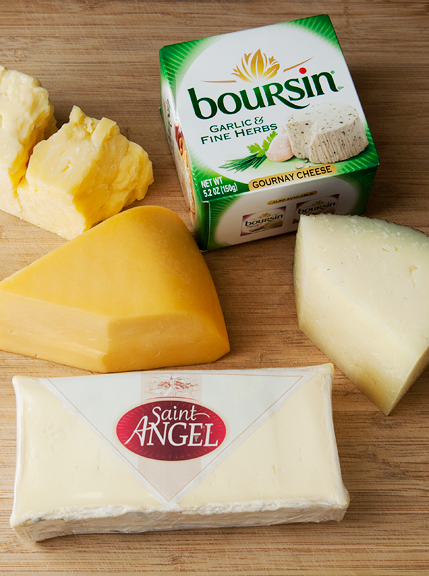
some gluten options: croccantini, brioche toasts, grissini, crostini, fruit and nut crisps, sliced baguette
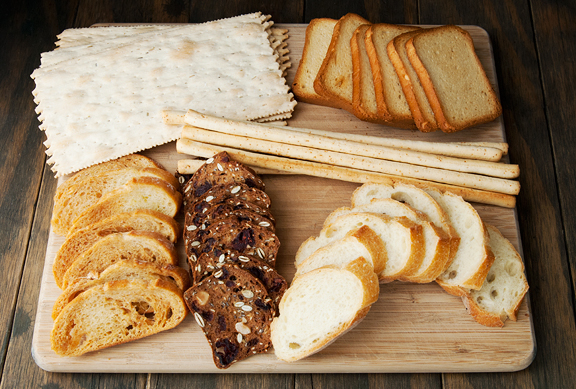
fruity things: pomegranate, fig brandy jam, grapes, apple, membrillo
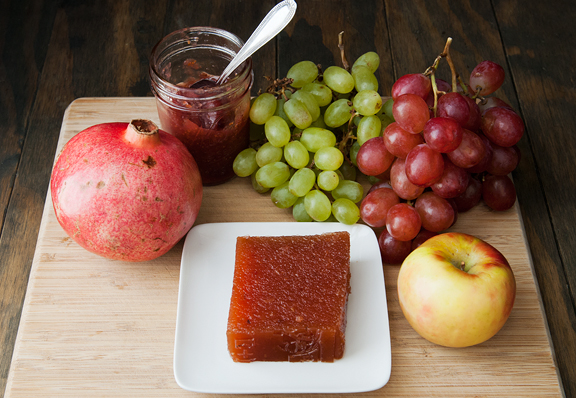
**Jump for more butter**


























